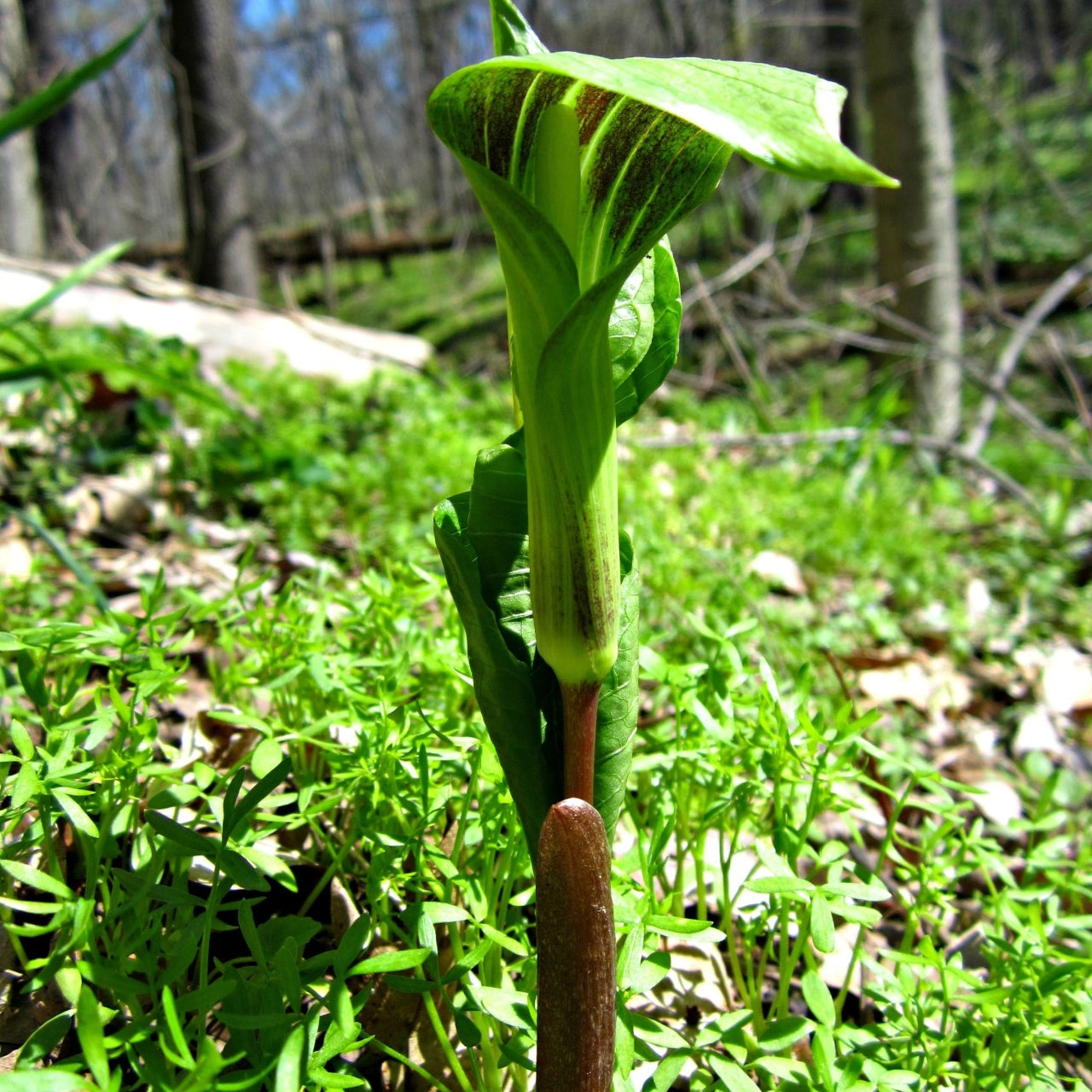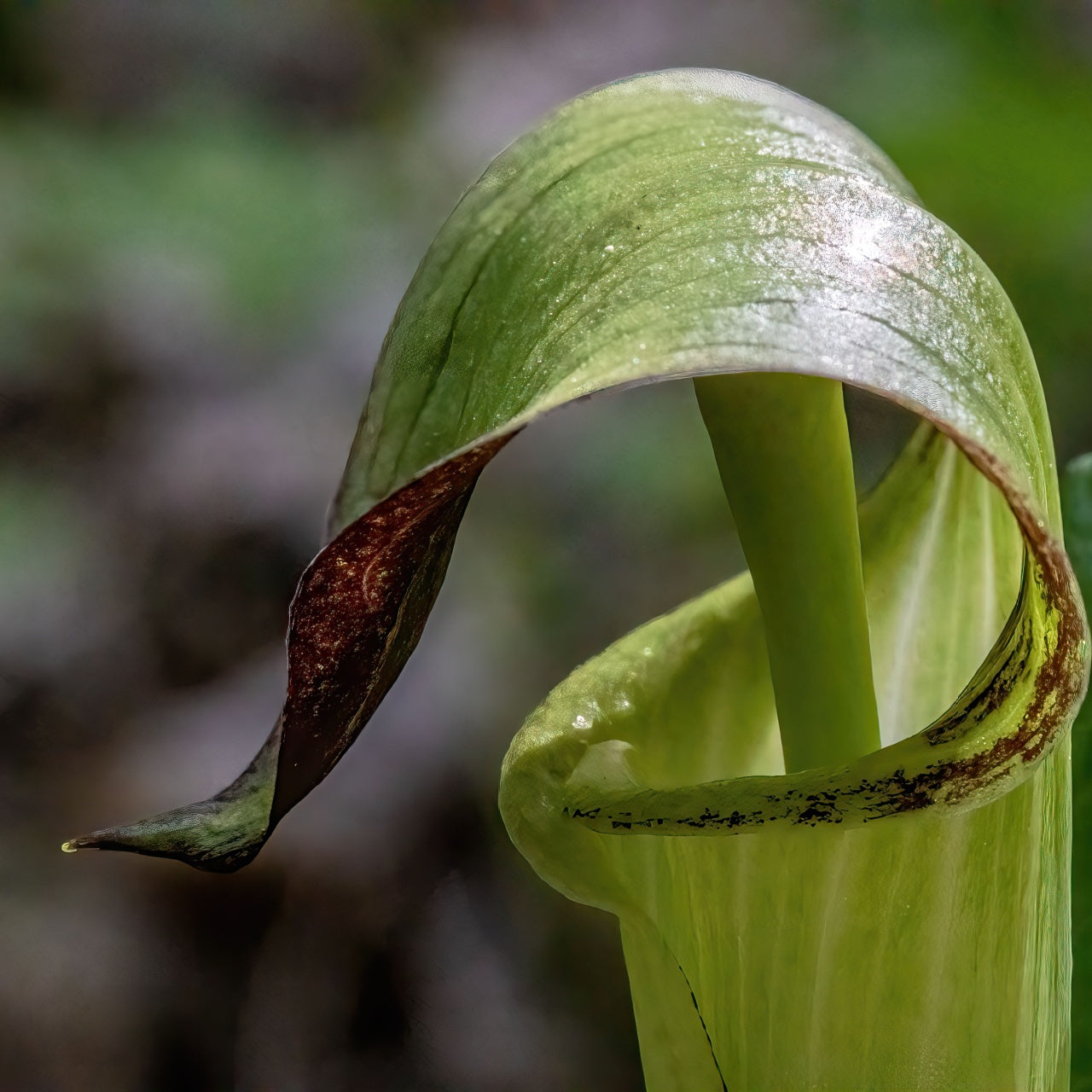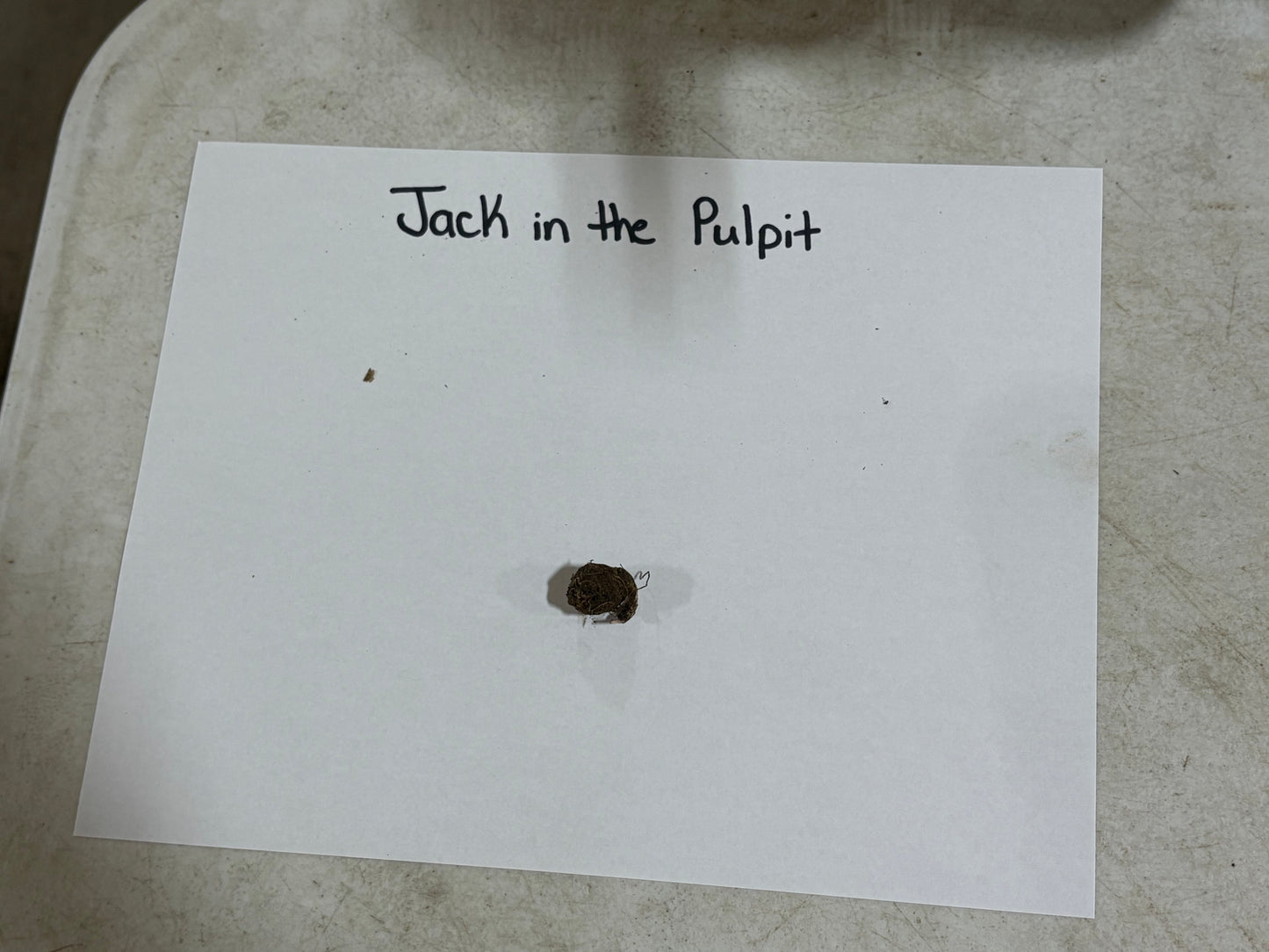



Removes & Absorbs Toxins
Improves Air Quality
Low maintenance & easy to grow
Buy Jack In The Pulpit Arisaema Triphyllum Online Wholesale
Jack in the Pulpit is an attractive plant prized for its colorful foliage; subtle and delicate purple-striped blue, green, or white "flowers" bloom in spring and summer, and bright red berries appear in fall to attract birds. It is a unique addition to a woodland or container garden.
Jack In The Pulpit Can Reach 3 Feet Tall
The tall structures people assume are the "flowers" are tall hooded stalks surrounded by three large, parted leaves. The flowers are almost invisible dots hidden inside the plant's spadix. The specimens may grow three feet high and 12 inches wide at maturity.
This Perennial Is Very Hardy
Low-maintenance, plants do best in shady areas with acidic and moist soils. For the most part, this plant is bug- and disease-resistant. It is an excellent choice for a striking addition to adding height, visual interest, and color to your garden. In many woodland areas, this plant grows wild.
The Plant Has A Stunning Flower
As a young plant, its leaves resemble poison ivy. If we look at the Jack in the Pulpit in the spring and use our imaginations, the plant resembles a man in the preacher's pulpit giving a sermon. The sizable surrounding longleaf spathe grows to 8 cm long. It can be stripped or variously colored.
It grows best in zones 4 through 8
Botanical Latin Name: Arisaema triphyllum
Common Name: Jack-In-The-Pulpit
Sun Exposure: Loves shade.
Hardiness Zones: 4,5,6,7,8
Mature Height: 30 to 65 cm.
Spread Plant 2 to 3 inches deep in autumn or spring.
Spacing: Six inches apart or farther.
Growth Rate: Perennial.
Flowering Time: From April to June.
How Long It Flowers: Around four months.
Flower Color: Tiny flowers surround the spandex or "Jack," surrounded by a large spathe. The path can be green, purple, or brown. The pulpit display turns to red berries, which stay through the summer if appropriately watered.
Soil Requirements: Well-drained but moist humus-rich soil. Ph may be neutral or slightly acidic.
Pruning: Pollinated by flies when mature.
This Is How Your Plants Will Look upon Delivery
Bloom Season
Bloom/Foliage Color
White
Shipping date depends on the date displayed and chosen when you order from the product's page.
We do not offer warranties on products after 5 days past receiving your plants.
By signing up, you agree with our privacy policy.






